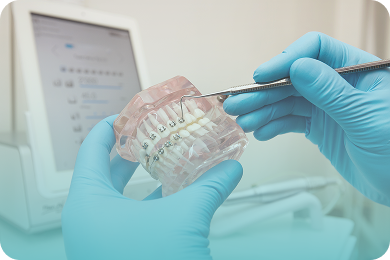FINDING THE BEST DENTAL INSURANCE
Best Dental Insurance in Missouri for Dental Implants
Discover the best dental insurance plans in Missouri for dental implants so you’re able to get the more affordable and quality dental care.

Top 3 Dental Insurance Plans
Discover the top 3 dental insurance plans in Missouri for dental implants and why they made our list.

Reason for Being Chosen:
The PrimeStar Complete plan covers 20% of dental implant costs from day one, with a $2,500 annual maximum, and 50% after twelve months of enrollment. Ameritas plans have no lifetime limit, allowing members to receive multiple dental implants over time.

Reason for Being Chosen:
MetLife’s top PPO plan has a $2,000 annual maximum and covers 50% of dental implant costs after a twelve-month waiting period. Although some restrictions apply, there is no lifetime limit, so members can receive multiple implants over time.

Reason for Being Chosen:
The Ultimate Plan covers 60% of dental implant costs after a twelve-month waiting period. The annual maximum benefit starts at $1,500 in the first year of enrollment and increases over time. There is no lifetime limit on benefits.
Other Dental Insurance Plans
While these plans didn’t make our Top 3, they still offer good coverage for dental implants and may be worth considering.
Reason for Being Chosen:
Mutual of Omaha offers two plans with either a $2,000 or $3,000 lifetime benefit for dental implants, but there is a twelve-month waiting period before members are eligible to receive dental implants.
Reason for Being Chosen:
The Premier Plus Plan includes a $1,500 lifetime implant benefit, covering 10% of dental implant costs immediately, 40% after the first year, and 50% after the second year.
Frequently Asked Questions
Choosing the right dental insurance can be tricky, especially when considering the dental plan’s cost, covered procedures, waiting periods, rules/restrictions and more. DenScore has analyzed every dental insurance plan in each state and ranked the top plans so you can choose the best one for your specific needs. For more information, please refer to our Terms of Service.
With a PPO dental plan that includes implant coverage, patients typically pay $2,500 to $5,000 out of pocket for a single dental implant, which includes the surgery, abutment, and crown. Most plans cover 30% to 50% of implant costs but have an annual maximum benefit of about $1,500 to $2,000, which limits how much insurance will pay. Without insurance, the full cost of a single dental implant usually ranges from $4,000 to $8,000, with additional costs if a bone graft is required. Also, prices can vary significantly depending on where the dental practice is located and whether a general dentist or specialist does the work.
It depends. Some dental insurance companies and Medicare Advantage plans use misleading language and “bait and switch” tactics in order to sell more policies. If you mistakenly choose one of these plans, you probably won’t save much money on dental care and you may actually lose money if you’re paying high monthly premiums. The easiest way to save money with dental insurance is by choosing an in-network dentist when you need dental work. For more tips on how to save money when using dental insurance, check out DenScore’s FREE online dental tool, which is available 24/7!
To save the most on dental care, look for a plan with a high annual maximum of $2,000 or more and low coinsurance for costly procedures to minimize out-of-pocket expenses. For treatments like crowns, root canals and dentures, aim for a plan that covers at least 50 percent of the costs. Some plans may also cover part of cosmetic procedures, including teeth straightening, whitening, and porcelain veneers.
Preferred provider organization (PPO) plans are often a better choice than health maintenance organization (HMO) plans. While HMO dental insurance usually comes with lower monthly premiums, you’ll face higher copays for most treatments, and fewer dentists participate in HMOs, making it harder to find a high-quality provider. For employers looking to move beyond traditional dental insurance, companies like DntlDirect offer alternative dental benefits that lower costs while giving employees access to better care.
With a PPO dental plan that includes orthodontic coverage, patients usually pay $3,000 to $5,000 out of pocket for braces or clear aligners. Most plans cover 50% of orthodontic treatment costs but place a lifetime maximum on orthodontic benefits, often between $1,000 and $2,000 per person. Without insurance, the total cost of braces or clear aligners typically ranges from $4,500 to $7,500, depending on the complexity of treatment and the location of the orthodontic practice.
Popular Searches
Best Dental Insurance Near You
Popular Blog Posts
Copyright @2025 DenScore
The information provided on DenScore, including our website and web application, is for general informational purposes only. It is not a substitute for professional medical advice, diagnosis, or treatment. Always consult your dentist or healthcare provider with any questions about your oral health or specific treatment needs.



